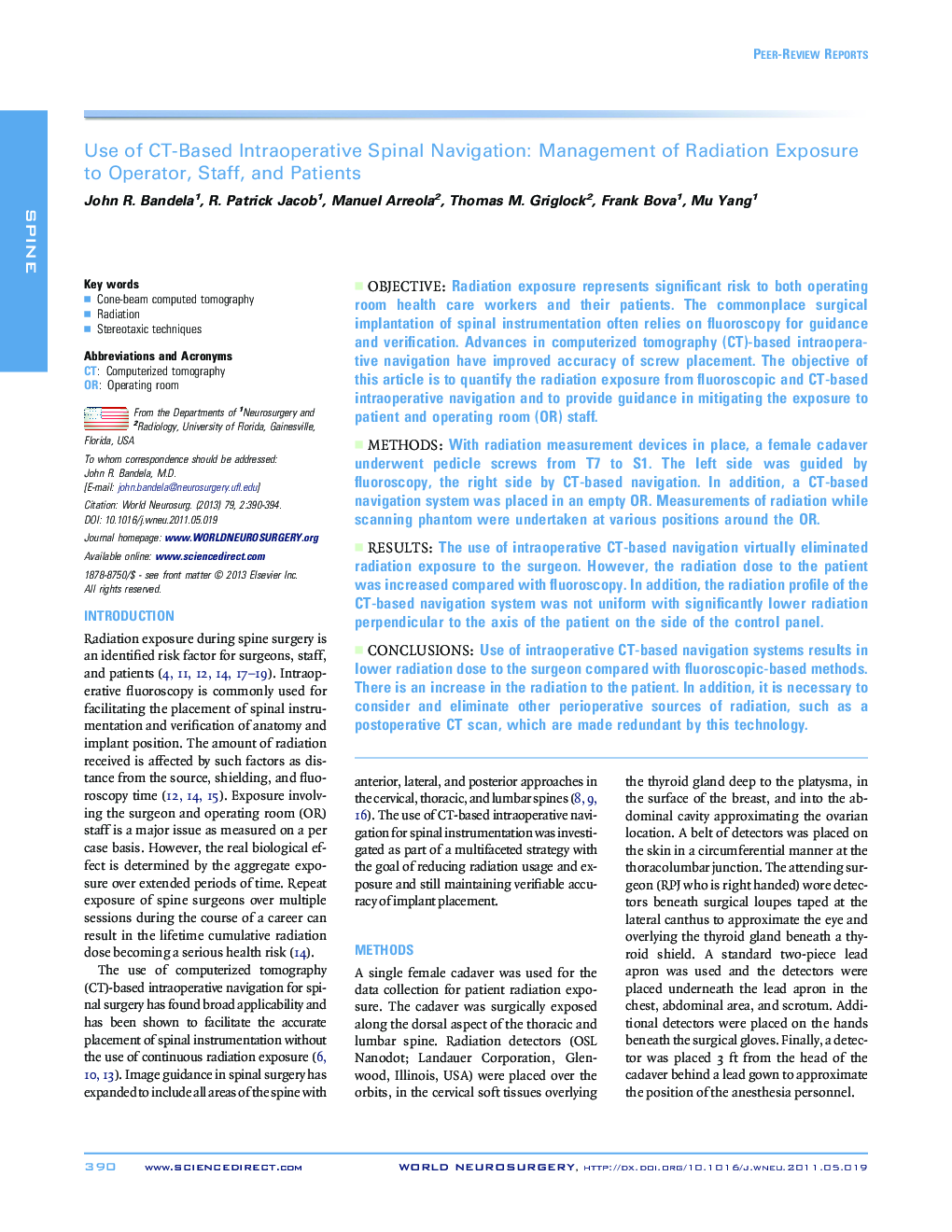| Article ID | Journal | Published Year | Pages | File Type |
|---|---|---|---|---|
| 3096583 | World Neurosurgery | 2013 | 5 Pages |
ObjectiveRadiation exposure represents significant risk to both operating room health care workers and their patients. The commonplace surgical implantation of spinal instrumentation often relies on fluoroscopy for guidance and verification. Advances in computerized tomography (CT)-based intraoperative navigation have improved accuracy of screw placement. The objective of this article is to quantify the radiation exposure from fluoroscopic and CT-based intraoperative navigation and to provide guidance in mitigating the exposure to patient and operating room (OR) staff.MethodsWith radiation measurement devices in place, a female cadaver underwent pedicle screws from T7 to S1. The left side was guided by fluoroscopy, the right side by CT-based navigation. In addition, a CT-based navigation system was placed in an empty OR. Measurements of radiation while scanning phantom were undertaken at various positions around the OR.ResultsThe use of intraoperative CT-based navigation virtually eliminated radiation exposure to the surgeon. However, the radiation dose to the patient was increased compared with fluoroscopy. In addition, the radiation profile of the CT-based navigation system was not uniform with significantly lower radiation perpendicular to the axis of the patient on the side of the control panel.ConclusionsUse of intraoperative CT-based navigation systems results in lower radiation dose to the surgeon compared with fluoroscopic-based methods. There is an increase in the radiation to the patient. In addition, it is necessary to consider and eliminate other perioperative sources of radiation, such as a postoperative CT scan, which are made redundant by this technology.
